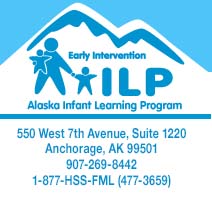
Developmental Checklist: 18 - 21 Months
Your baby is becoming more coordinated. He or she may already have learned to roll a large ball. Now he or she can learn to kick and throw the ball. Your child is now ready to perform some self-help skills. At this age children may be very active and not want to sit still long.
Things Your Child May Do At This Age
- Jump with both feet off the floor at the same time
- Walk up stairs, holding an adult’s hand (or a railing)
- Climb and stand on a chair
- May help to dress him or her self
- Roll a ball
- Feed themselves
- Turn individual pages of a book
- Begin to recognize, name and pick out common objects
- Begin to make phrases or sentences of two or three words
Safety First!
- Bathing is fun for most toddlers. Although toddlers can sit and stand easily, they are not safe when left alone while bathing or engaged in water play.
- Encourage your child to build with blocks or other building materials such as sand, boxes, pots and pans, measuring cups or scraps of lumber that are sanded and safe. This will help him develop his mind.
- Special Note: Store dangerous items on upper shelves. Toddlers are experimenters. They like to take things apart and fit them together. Keep sharp, pointed items such as scissors and knives, tools and electrical appliances out of reach.
Health Hints
- Continue to develop the habit of brushing teeth after meals and before bedtime. Use a soft toothbrush and make it fun.
Nutrition Notes
Snacking on candy, cookies, cake and sweet liquids (fruit juice, Kool-Aid, soda) can become a habit that is hard to change. Begin early to teach your child to eat the right kind of snacks such as: fruit, raw vegetables, bread, crackers, low sugar cereals, water and milk.
Things You Can Do Every Day To Help Your Child Grow
- Read to your child every day. A nighttime book or story can often help a child settle down and get ready for bed.
- Saying short nursery rhymes (such as “Hickory Dickory Dock” or “Twinkle, Twinkle Little Star”) for your child can be fun, as they will start to hear the similar sounds of the rhymes.
- Teach him or her how to put words together to make phrases and sentences. For example: if he or she says, “Want juice!”, you repeat, “I want some juice.”
- Take an egg carton and put a spool in each section. Let your baby open the carton and take the spools out and then put them back and close the carton. Teach him or her the words for what he or she is doing by saying “in”, “out”, “closed” and “open.”
- Provide large sheets of paper and large crayons for scribbling and writing.
- Show your toddler how to work simple puzzles.
- Play throw and catch with a ball.
- Act out word meanings. For example, hold him up and say, “Baby is up high in the air!” or put him on the floor and say, “Baby is down low on the floor!”
Toys You Can Make For Your Child
- Take a shoebox and make two or three holes of various shapes and sizes in the lid. Then show your child how to push or drop different objects through the holes. They’ll find out that some things will fit through one hole and not through another.
- Make a felt face. Putting the eyes, nose and mouth on a felt face can be a lot of fun. The parts of the face can be made out of felt and backed with velcro so your toddler can put them on and off. Supervise your child during use.
